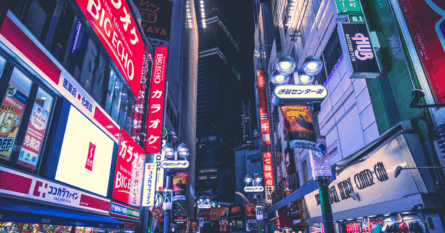Estimated reading time: 9 minutes
For centuries, the tea ceremony has been a central part of Japanese culture, offering a serene and meditative experience that brings harmony to the mind, body, and soul. No visit to Japan would be complete without taking part in a tea ceremony. Let’s take a tour and learn more about the history and customs of this ancient ritual.
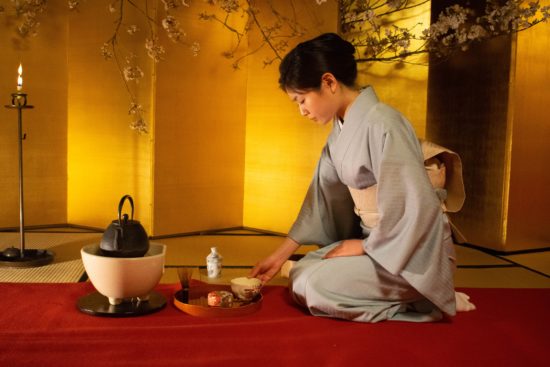
Sipping on a steaming cup of tea, in tranquil surroundings and the aroma of serene incense, is an experience that has been cherished for centuries in Japan. The Japanese tea ceremony, also known as ‘sado’ or ‘chanoy,’ is a traditional ritual that has been passed down through generations and is considered a cultural treasure. It involves the preparation, serving, and drinking of tea in a ceremonial setting. The tea ceremony is rooted in Zen Buddhism, and its ultimate goal is to achieve a state of harmony, respect, and purity of mind and body.
Whether you’re a tea aficionado or simply looking to discover something new, keep reading to discover the beauty and tradition of tea ceremony.
A look into preparation, formality, and etiquette
The traditional tea ceremony is a formal, highly stylized event that is steeped in tradition and symbolism. It is typically performed in a tearoom, or ‘chashitsu’, which is a small, traditional building designed specifically for the ceremony. The tearoom is usually located in a secluded garden and is designed to be simple and unadorned, with a minimalistic aesthetic that is meant to reflect the purity of the tea ceremony.
The host of the tea ceremony is known as the ‘teishu’, and it is their responsibility to prepare the tea and serve it to the guests. The guests are expected to follow a set of strict etiquette rules, such as bowing and showing respect to the host and other guests and using specific gestures when receiving tea and sweets.
The tea used in the ceremony is typically matcha, a powdered green tea that is made from finely ground tea leaves. The tea is prepared by whisking the powder with hot water in a special bowl known as a ‘chawan’. The tea is then served to the guests in small cups known as ‘chasaku’.
The tea ceremony is a slow, meditative process that is meant to be enjoyed mindfully and in silence. The host and guests are expected to be fully present in the moment, and to appreciate the beauty and simplicity of the tea and the surroundings.
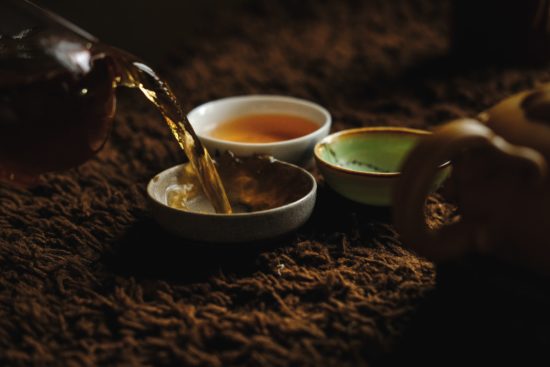
There is also a more relaxed and shortened version of the traditional tea ceremony, called informal tea ceremony, which is perfect for those who are interested in experiencing the culture and customs of tea ceremonies but may not have the time or resources to participate in a traditional ceremony. These ceremonies include some traditional Japanese sweets and matcha tea, and guests do not have to dress up, so it is more casual and easier to participate.
Tea ceremony dress code
The traditional dress code for tea ceremonies is kimono, which is a traditional Japanese garment worn by both men and women. For men, the kimono is typically black or dark blue, and for women, it is usually a lighter color such as light blue, pink, or yellow. It is important to note that the kimono should be worn in a traditional style, which means it should be worn with proper undergarments and accessories. It’s also common to wear a traditional head covering such as ‘tenugui’ (a small towel) or ‘hachimaki’ (a headband) depending on the occasion and gender.
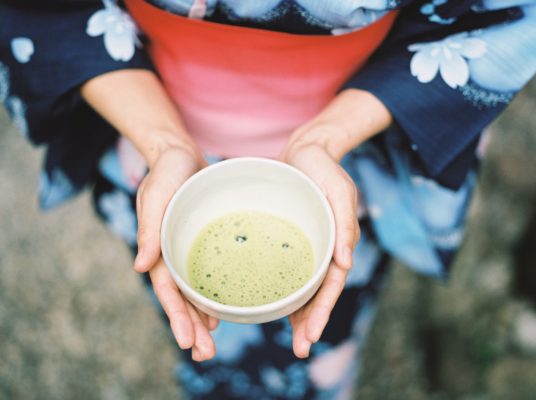
The dress code may vary depending on the level of formality of the ceremony and the school of tea, which is hosting the event, it’s best to check with the host for the dress code in advance. As a tourist, it is possible to attend the ceremony wearing your own clothes, but it’s best to wear something formal and avoid wearing anything too casual or revealing.
Best places to experience tea ceremony in Tokyo
Tokyo is home to some of the most beautiful and authentic tea ceremony venues in Japan. Whether you are a seasoned tea ceremony enthusiast or a curious first-time visitor, these places offer a unique and immersive experience that will transport you to the heart of Japanese tradition.
But before we start, remember Tokyo is a bustling metropolis, known for its fast-paced lifestyle and crowded streets. Navigating this city can be a daunting task and finding a taxi can be both time-consuming and expensive. One solution is to have a knowledgeable local chauffeur, who can ensure a smooth and relaxed travel experience in the city.
While you’re in Tokyo, it’s worth booking a reliable Blacklane car service to take you around the city. When you download the Blacklane app, you’ll get access to local chauffeurs who’ll whisk you off to your preferred location with ease.
Urasenke Tokyo
Urasenke is one of the main schools of Japanese tea ceremony (along with Omotesenke and Mushakōjisenke) and Urasenke School Tokyo Branch is a must-see destination for anyone interested in learning about the art of tea. Founded by the late Grand Master Soshitsu Sen XV, it is the main branch of Urasenke school in the country.
The school offers various classes, workshops, and demonstrations that are open to the public, as well as private tea ceremonies that can be arranged in advance. These classes and ceremonies are taught by experienced and qualified instructors, who have dedicated their lives to the study and practice of the tea ceremony. The school also features a tearoom and a traditional Japanese garden, which provide a beautiful and authentic setting for a tea ceremony. Visitors can also purchase tea-related goods and souvenirs at the school’s shop.
Hamarikyu Gardens
Hamarikyu Gardens is a beautiful traditional Japanese garden which offers a serene setting for a tea ceremony. The garden was built in the 17th century as a feudal lord’s residence and was later converted into a public park in the 20th century. The garden features a large pond, a teahouse, and a variety of traditional Japanese landscaping, such as rock gardens, trees, and flowers. The gardens were also home to a traditional Japanese duck hunting blind, which is now used as a viewing platform, from which visitors can see the picturesque scenery of Tokyo Bay.
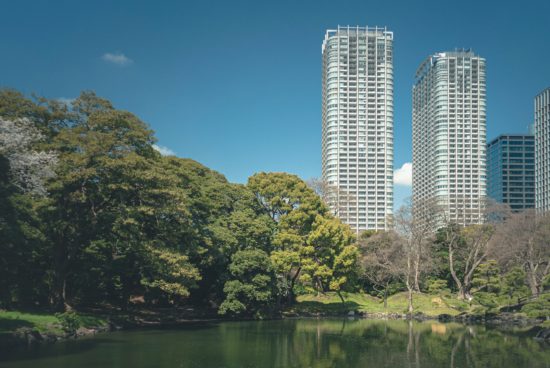
The teahouse offers a beautiful view of the city skyline, making it an ideal spot for a tea ceremony. The tea ceremony here is more like a ‘do-it-yourself’ version of a real ceremony. You can complete the steps on your own. The ritual steps include drinking tea, eating sweets, and being thankful for the tea and its preparation. It is actually the perfect setting for tourists to experience a Tokyo tea ceremony in an informal manner.
HiSUi Tokyo
HiSUi Tokyo is a Japanese cultural school that teaches martial arts and crafts to locals and tourists. The house is famous for its traditional Japanese architecture, which includes a thatched roof, wooden walls, and a garden. It is also known for its use of high-quality Japanese tea leaves, which are carefully selected and prepared by the master of the tea ceremony. The tea ceremony service at HiSUi Tokyo is satisfactory but on the pricey side.
There are also different types of Japanese traditions you can experience besides the tea ceremony such as kimono dressing, calligraphy, Samurai swordsmanship, and etc. The teahouse also offers the opportunity to purchase Japanese tea leaves, tea utensils, and traditional Japanese sweets.
Senso-ji Temple
Senso-ji Temple is an ancient Buddhist temple dedicated to Kannon, the goddess of mercy and compassion. It is the oldest temple in Tokyo, dating back to 645 AD. The temple is known for its beautiful traditional architecture and its peaceful atmosphere.
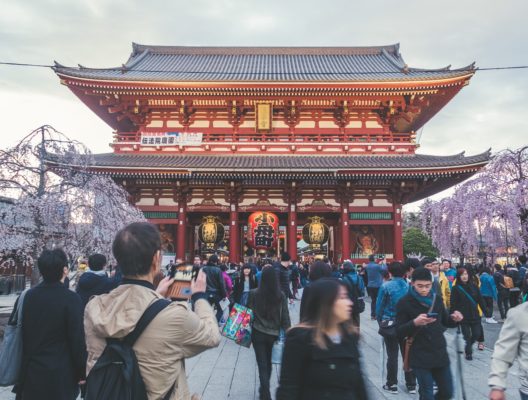
The temple’s tea ceremony is held in a traditional tea house located in the temple’s garden. It is a popular Japanese-style garden featuring Tokyo’s oldest stone bridge (made in 1618), which attracts lots of tourists as well as locals.
Some of the other activities that may be offered at Senso-ji Temple include incense appreciation, flower arranging, and calligraphy. The temple is a symbol of the spiritual heartbeat of Japan and offers visitors a glimpse into the rich religious culture of the country. The area surrounding the temple is also a popular spot for shopping and dining, with many traditional Japanese souvenirs and local delicacies stands available.
Asakusa Jidaiya
Asakusa Jidaiya is a traditional Japanese teahouse located in the famous Asakusa area. The teahouse offers a variety of traditional Japanese ceremony experiences, including tea ceremony, sweets-making, and calligraphy. The comprehensive tea ceremony in Jidaiya lasts for about an hour to 90 minutes. Here, you have the option to either observe or participate in a traditional tea ceremony while dressed in a kimono and learning about the various steps involved. Depending on the course, the host will guide or prepare the tea and serve it while explaining tea ceremony manners and rituals. After that you can take photos with Japanese customs and enjoy a rickshaw ride through the market.
Asakusa is a historic neighborhood in Tokyo and is known for its traditional vibe. The atmosphere here is unique, as it is a mix of old and new, traditional, and modern. The streets are lined with old-fashioned shops selling traditional Japanese goods, while modern restaurants and cafes sit next to them. Asakusa is also famous for its Hanayashiki amusement park, which is the oldest theme park in Japan and features many rides and attractions.
HAPPO-EN
Tired of Tokyo’s hustle and bustle? Relax in an underrated garden, which holds the potential to become your weekend getaway. HAPPO-EN garden is a hidden gem that few tourists know about.
This is a traditional Japanese circuit-style garden with a koi pond at its center. It is home to a vast collection of bonsai trees, some of which are over 500 years old. The teahouse is a traditional Japanese-style building that is also used for other events such as Japanese flower arrangements and traditional Japanese sweets-making demonstrations.
Tea ceremonies are held at Muan Tea House, where matcha tea and traditional sweets are served. There could be a two-month wait for an official tea ceremony, but you can drop-in for an informal experience. HAPPO-EN is also known for its wide range of event spaces which can be used for various occasions such as weddings, parties, and corporate events. Additionally, the venue grounds contain a few fancy restaurants that are open to the public.
